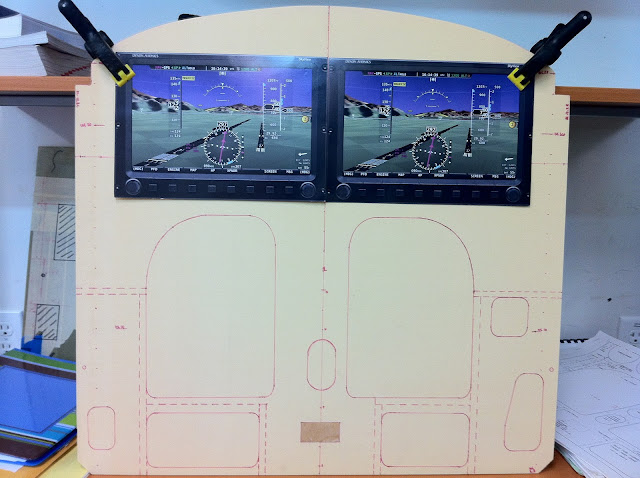Hot-wiring
Thus far, we have been working with flat, and relatively thin pieces of foam. We have had to do some minor shaping with a knife, and sandpaper, but have not had to deal with the thick foam blocks that will become wings, winglets, canard, and control surfaces.
As you might imagine, these aerodynamically significant parts require a level of accuracy that is beyond what is possible working with such primitive tools. To our benefit, the designer has once again devised a simple yet ingenious method of achieving the precise shaping of these parts, with inexpensive home-made tools.
It turns out that the foam selected for this purpose (PVC) can be easily cut using a hot metal wire (nichrome). What is even more significant from a health standpoint, is that it does so safely. This is an important point to be made, because Urethane foam will also cut with a hot-wire, but will release hazardous gasses in the process.
Hot-wiring PVC = Good
Hot-wiring Urethane = BAD!!!
 |
| Hot-wire cutter sketch |
So, we have a hot-wire. Now what?
More importantly, the hot-wire will enable us to make precise cuts of what?
This is where Burt Rutan provides his expertise in the form of paper templates. These templates need to be reproduced accurately onto some stronger material (usually wood laminate).
 |
| Canard template (not to scale) |
They later get nailed at both ends of a block of foam, and the hot-wire is made to slide over the profile of the template, thus yielding our airplane part.
 |
| Canard templates (one on each side of the foam) nailed to foam block |
One benefit of this method is that advantageous features, such as wing taper, twist, and smooth profile transition, can easily be reproduced to improve the aerodynamic efficiency of the part, in a way that is almost impossible to duplicate with any other form of airplane-building, at least on a budget and in a non-factory setting.
To prove this point I will share a video of my wife Gina, and my friend Mike, cutting a block of foam with a hot-wire. The width of the piece is not important, as this was just an exercise, yet the profile is an accurate reproduction of the Long EZ canard because they used the actual canard templates.
Worthy of mention, is the fact that Gina had never seen this process done before, and was blissfully watching TV before being summoned in the shop with a ruse. She had no previous knowledge, and received no instructions besides what you see on the video, and all she wanted was to get back to her show. Against all these odds, I have to admit that she did a great job, and showed us all that hot-wiring is not as difficult as you might imagine.
Gina and Mike cutting foam with a hot-wire cutter
 |
| Top foam removed |
 |
| Gina seems ready to go fly |





















